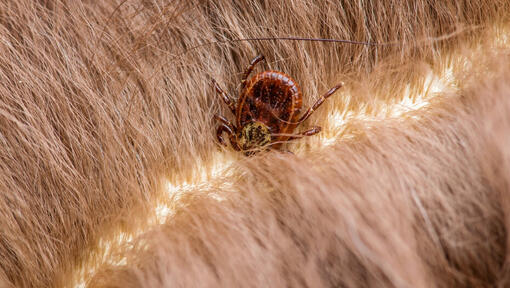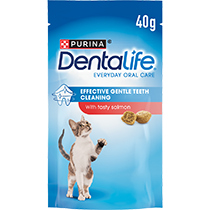How to Remove a Tick from a Cat & Other Cat Ticks Questions

If you have a cat that likes to explore the outside world, it’s likely that they’ll encounter a tick at some point. Find out how to remove a tick from a cat with this guide.
If your cat spends a lot of their time outside, it’s likely that they’ll get a tick at least some point in their lives. These tiny creatures latch onto your cat’s body and will feed for several days if not removed, so it’s important that they’re caught as early as possible in order to prevent further pain and discomfort, and to prevent them passing on certain infectious diseases which they can carry.
If you’ve spotted a tick on your cat, you may be wondering how to remove it without causing pain or leaving part of the tick behind, which is why we’ve put together a useful guide to tell you how to remove a tick from a cat safely and properly.
Introduction to cat ticks
There are two different groups of ticks to watch out for, hard ticks and soft ticks. Hard cat ticks often look like a sunflower seed; they are also recognisable by the hard shield found just behind their mouthparts. Hard ticks are the type of ticks you will usually find on your cat.
Soft ticks are the second type of group of tick. Instead of looking like a seed these ticks look like a raisin. These kinds of ticks are not usually found on cats, as they tend to feed on other animals instead such as birds or bats.
What are cat ticks?
Ticks are a kind of parasite. Ticks bite beneath a cat’s skin and suck blood back into their bodies. Unfed ticks are tiny, have eight legs, and can be black, brown, red or tan, but once they attach themselves to your cat they can swell up to the size of a pea as they fill with blood. Cat ticks are actually classed as arachnids instead of insects, which is a key difference between them and the flea. Ticks can pass disease onto an animal it feeds on; this is why tick prevention steps are an important measure to take when looking after a feline.
What do cat ticks look like?
Ticks are small, egg-shaped bugs with eight legs that resemble small spiders. Usually they range in size from 1mm to 1cm and have a white body, but this gets larger and darker as it gets filled with blood they suck out of their hosts (your cat, essentially).
They’re quite easy to spot on your cat’s skin and will usually feel like a small bump (which can sometimes be mistaken for a little skin swelling or mass), so it’s a good idea to inspect your cat regularly for signs of ticks.
Where do ticks come from?
Ticks generally prefer areas with lots of dense shrubbery, such as woodlands, grassland or countryside gardens, however they’re also common in areas with deer, sheep, hedgehogs or rabbits. Cats get ticks most frequently during the spring and autumn, but the little parasites can be found at any time of the year.
How can my cat catch ticks?
There are a number of different ways your cat can catch ticks. The first and the most likely is from other animals. Cats often interact with other animals once they leave the house. Ticks can find their way from one animal onto your cat very easily. If you are worried about cat ticks we advise you not to leave food outside your house, as this can encourage other animals to enter your cat’s territory.
If you tend to go on walks outside in fields or woodland areas ticks could find their way onto your clothes easily. This is because they tend to cling onto the top of branches and blades of grass, when you then brush past them they cling onto your hair and clothing. This means even indoor cats are in dangers of catching ticks, so whether your cat travels outside or not tick prevention is still something you should be aware of and do.
Another way your cat can catch ticks is just from exploring outside. Ticks can survive outside when not on a host. They can just as easily cling to a cat’s fur as they can to your clothing.
What are the dangers of ticks on my cat?
Ticks can be a very dangerous problem for cats. This is because some ticks carry disease when they feed. One of these diseases that ticks can carry is ‘Q fever’. If a cat contracts this disease it may begin to show a few of the following symptoms:
- High fever
- Anorexia
- Depression
- Miscarriages
- Occasionally seizures (although this is not very common)
Another disease that ticks carry is Ehrlichiosis. Once a cat contracts this disease a number of symptoms may begin to show themselves. These symptoms include vomiting, diarrhoea, swollen glands, lethargy, anorexia, swollen joints, discharge from the eyes and more.
What you’ll need to remove a tick from a cat:
- Another person to keep your cat calm and steady.
- A pair of gloves to wear – this is important as ticks can carry diseases which affect humans.
- A tick removing tool. You can purchase one at most pet shops, or you can also ask your vet to give you one.
- Cat-friendly antiseptic wipes.
- A small container to dispose of the tick.
- Disinfectant to clean your tick remover tool after use.
How to remove a tick from a cat
Removing a tick from a cat can be difficult because it’s important that you get the whole tick out without leaving its mouthparts buried in your cat’s skin, as this could lead to an infection. If you’re not sure how to remove the tick or you have difficulty trying to get it all out, take your cat to a vet.
Step by step guide to removing a tick from your cat:
- Ask a friend or family member to keep your cat calm, and don’t start trying to remove the tick until your cat is relaxed.
- Part the fur around the tick so you can get a good view.
- Position the tick remover around the body of the tick, close to your cat’s skin.
- Carefully pull and twist the tool (making sure not to squeeze) to dislodge the tick. Take your time with this step.
- Once the tick has been removed, check the mouthparts are still attached to the tick, place it in a container and dispose of it safely so it can’t get back onto your cat.
- Clean the area with your cat-friendly antiseptic.
- Dispose of the gloves and wash your hands thoroughly.
- Disinfect your tool to ensure it’s clean for future use.
If you don’t manage to get the whole tick, or if the area looks like it might be getting infected, take your cat to the vet.
How to remove a tick from a cat without tweezers
There are many old wives’ tales about how to remove a tick from a cat without a proper tick remover, but these are not advisable as they could cause further harm to either you or your cat.
Some of these include burning a tick off with a match, which could result in accidentally burning your cat or causing the tick to rupture, increasing the risk of infection or exposure to serious illnesses such as Lyme disease. It’s also a common misbelief that you should try smothering the tick with Vaseline to suffocate it, but in fact ticks only breathe around four times per hour, so this is unlikely to work.
It’s never a good idea to try to remove a tick from a cat without a tick removal tool. If you don’t have the correct tools you should either purchase them before starting, or take your cat to the vet and get them to remove it for you.
Preventing ticks on your cat in the future
If your cat spends a lot of time outside or if you live in an area that has lots of wildlife and shrubbery, it’s important that you check them for ticks regularly as part of your cat’s grooming routine. When they come in for their dinner be sure to run your hands over their body to check them over. Ticks are most commonly found around their head, neck, ears or feet, so pay close attention to these areas.
There are plenty of spot on treatments which are often combined with your cat’s flea treatment that will also protect them against ticks. These work as they enter the circulatory system of your cat, then when a tick or flea ingests their blood, it kills them rapidly. Additionally, some flea collars will also protect against ticks, but if your cat spends most their time outside these may not be suitable as they could get stuck on things such as branches and cause harm to your cat.
Want to find out more about cat health and parasites? Read our guide on lungworm in cats.













